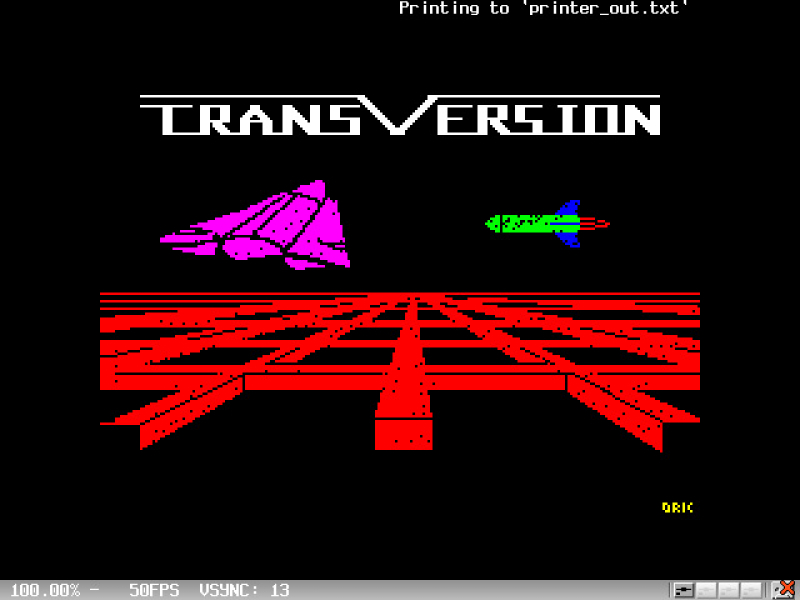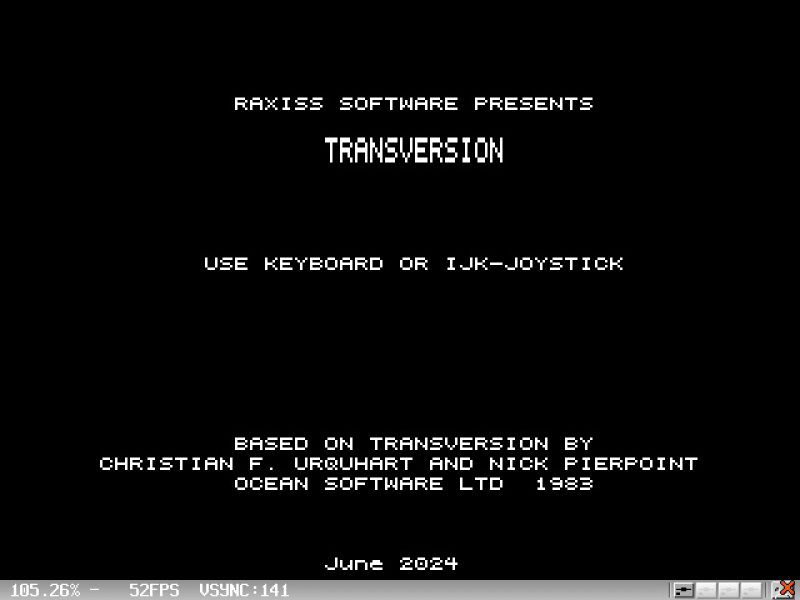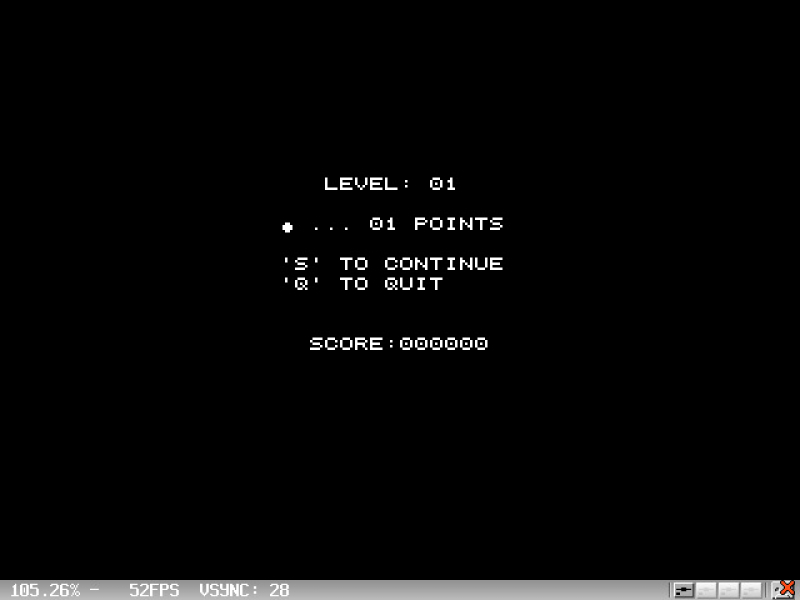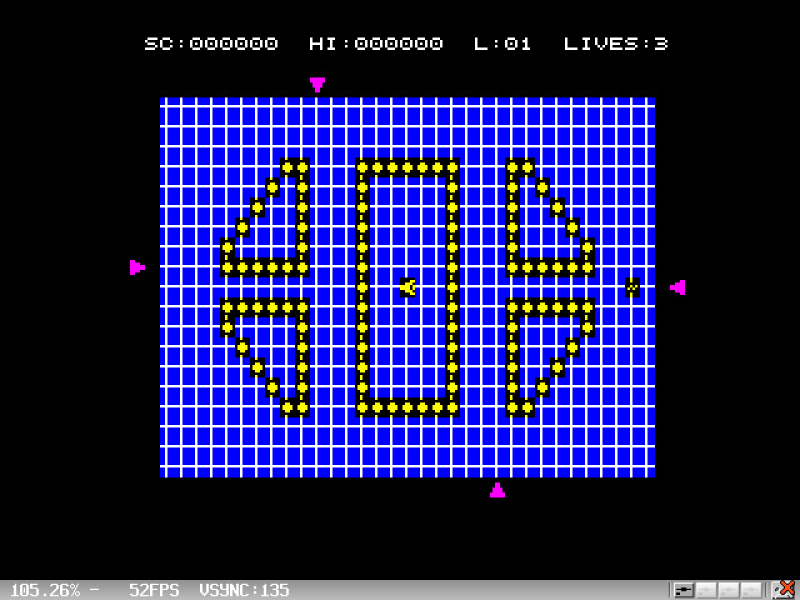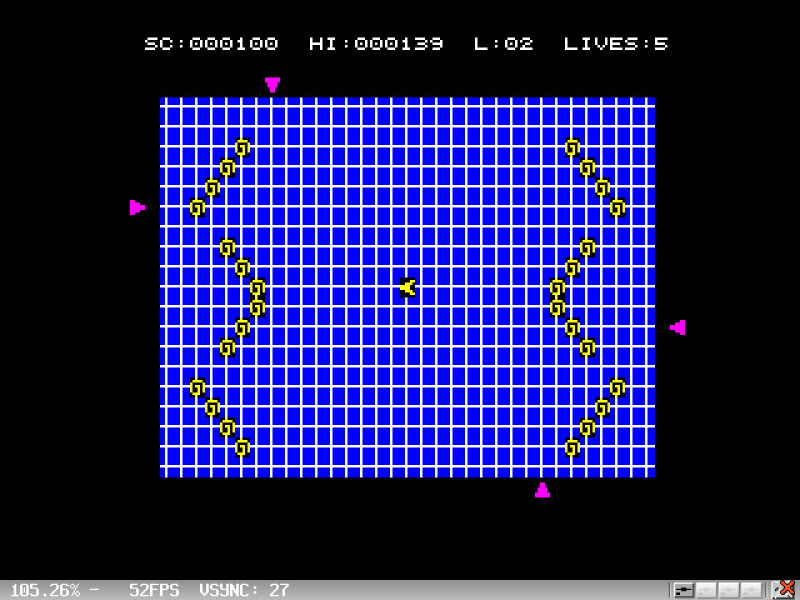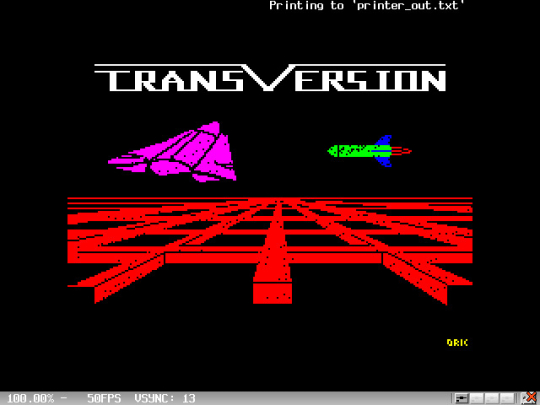
Transversion — An Arcade Puzzle from the 8-Bit Era
In the early 1980s, when home computers like the ZX Spectrum, Commodore 64, and ORIC began to enter the homes of gamers and enthusiasts, the first exciting arcade games also started to appear. Among them was a lesser-known but highly original and clever game — Transversion.
Origins and Creators
Transversion was created in 1983 by Christian Urquhart and published by Ocean Software, one of the leading British video game companies at the time. It was developed for the ZX Spectrum 16K, a computer popular across Europe for its affordability and versatility.
How Is Transversion Played?
The player controls a small spaceship called Elimax, which moves across a grid filled with hostile “eggs” (enemy pods). The goal is simple yet tense — the ship must pass through each pod to destroy it.
No shooting. No timer. The only weapon at the player’s disposal is movement. But there’s a catch — the longer you move in a straight line or remain stationary, the easier it is for the enemies to hit you. They shoot energy beams from the edges of the grid, so you must think fast to dodge them.
What Makes the Game Special?
Transversion combines arcade intensity with logical planning — something quite rare for 1983. The design is simple, but each level demands strategic thinking and precise control.
Transversion for ORIC — A Remake for Another 8-Bit Hero
Several decades later, an unofficial port of Transversion was created for the ORIC computer (ORIC-1 and ORIC Atmos). This version preserves the core idea and uses standard color graphics in text mode.
Legacy and Significance
Although it never reached the cult status of games like Manic Miner or Jet Set Willy, Transversion is an example of a “quiet classic” — a title that may not have had flashy marketing, but impresses with depth and originality.
Transversion and its ORIC clone are more than just nostalgia — they are living proof that even within limited hardware constraints, something creative and exciting can be born. If you get the chance, give it a try — you'll see that classic arcade puzzles still have a lot to offer.
Controls
Arrows - Move
Specifications
This game has an experimental speech synthesizer built into it.
Forum Link
https://forum.defence-force.org/viewtopic.php?p=32988
Game release date
2025
Download Link
.
